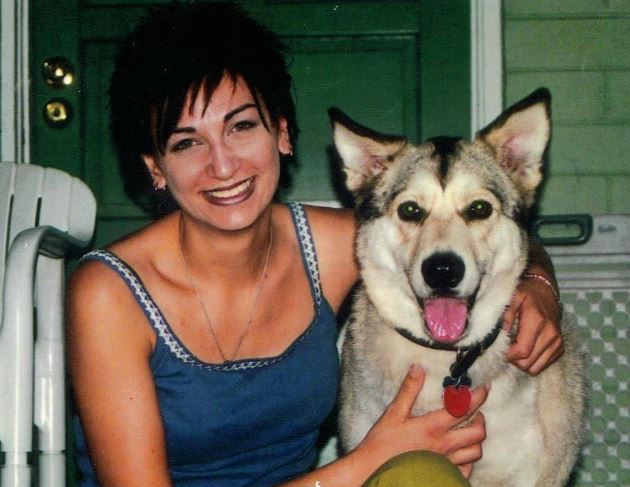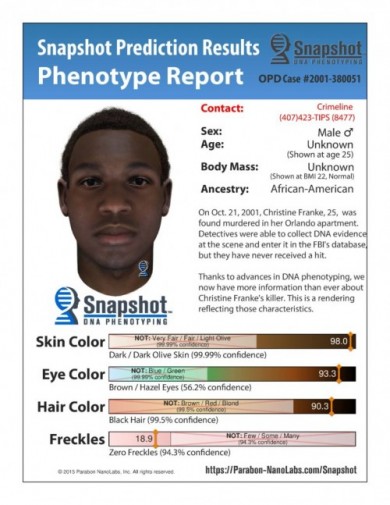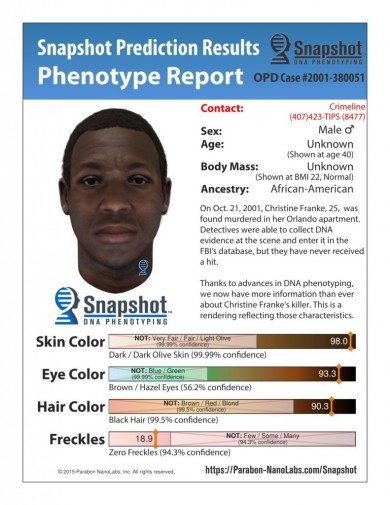New technology facilitates composite sketch of Christine Franke’s black murderer
CFF, “New technology uncovers lead in UCF student’s cold case”, 21 Oct. 2016:

On Oct. 21, 2001, UCF student Christine Franke was murdered.
On the day she died, the 25-year-old education major worked a shift at Cigarz bar on Universal Citywalk, according to an Orlando Police Department press release. When Franke’s shift ended at 4 a.m., she walked with coworkers to an employee parking lot at Universal.
That was the last time anyone saw Franke alive.
Her body was found the next day in her Colonial Gardens apartment by a friend and neighbor. She had been shot in the head.
After 15 years, the Orlando Police Department was still following every lead but despite their efforts, the case had grown cold — until today.
In a press conference held by OPD today, the fifteenth anniversary of the discovery of Franke’s death, police officials presented a new development in the case: a composite photo of Franke’s killer.
This is the first composite image available to the public. While DNA evidence was found at the crime scene, the killer’s records were not in the FBI’s national DNA database. Homicide detective Mike Moreschi said there have been no witnesses to the murder at the police department’s disposal.
Recently Orlando homicide detective Mike Fields discovered Parabon NanoLabs, a company that produces a detailed profile of someone based on their DNA. Police Chief John Mina said he hoped the profile would be beneficial in solving the case. Moreschi, 48, said the company uses the same science behind Ancestry.com, connecting DNA evidence with a person’s ancestral traits, specifically race.

